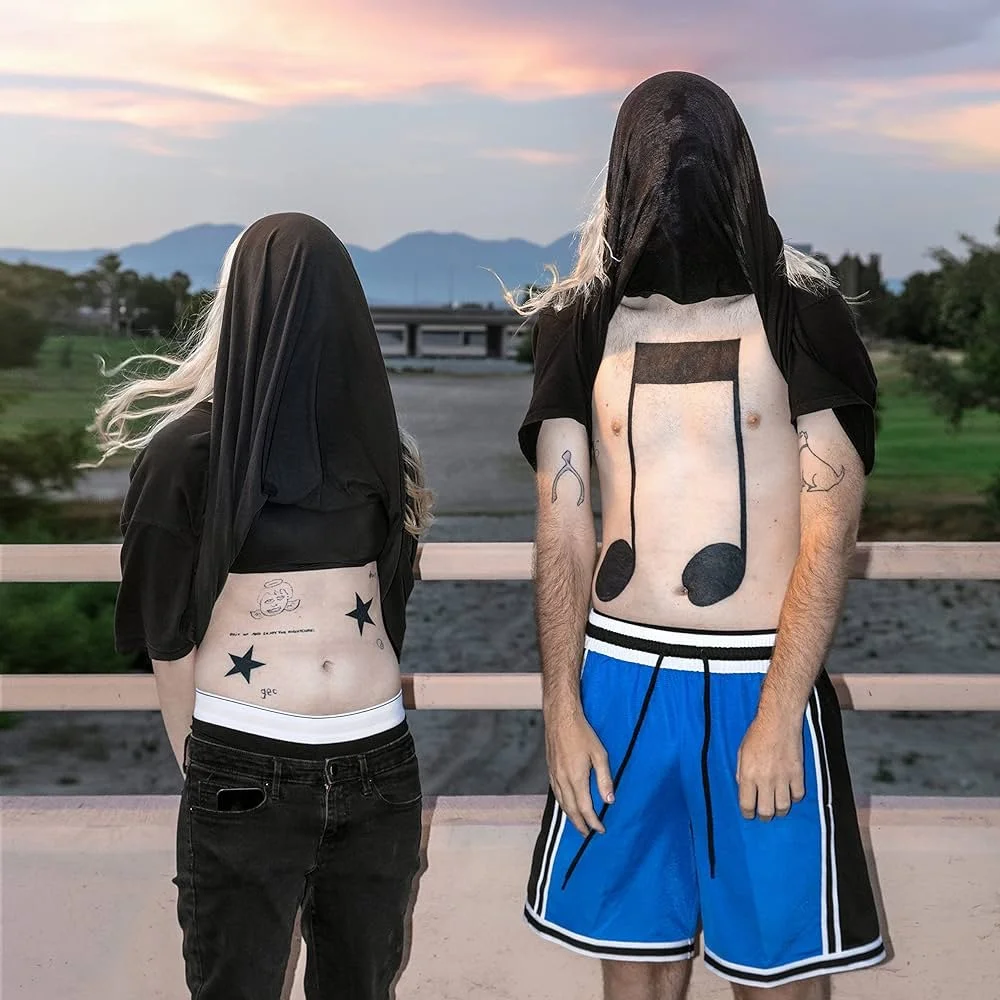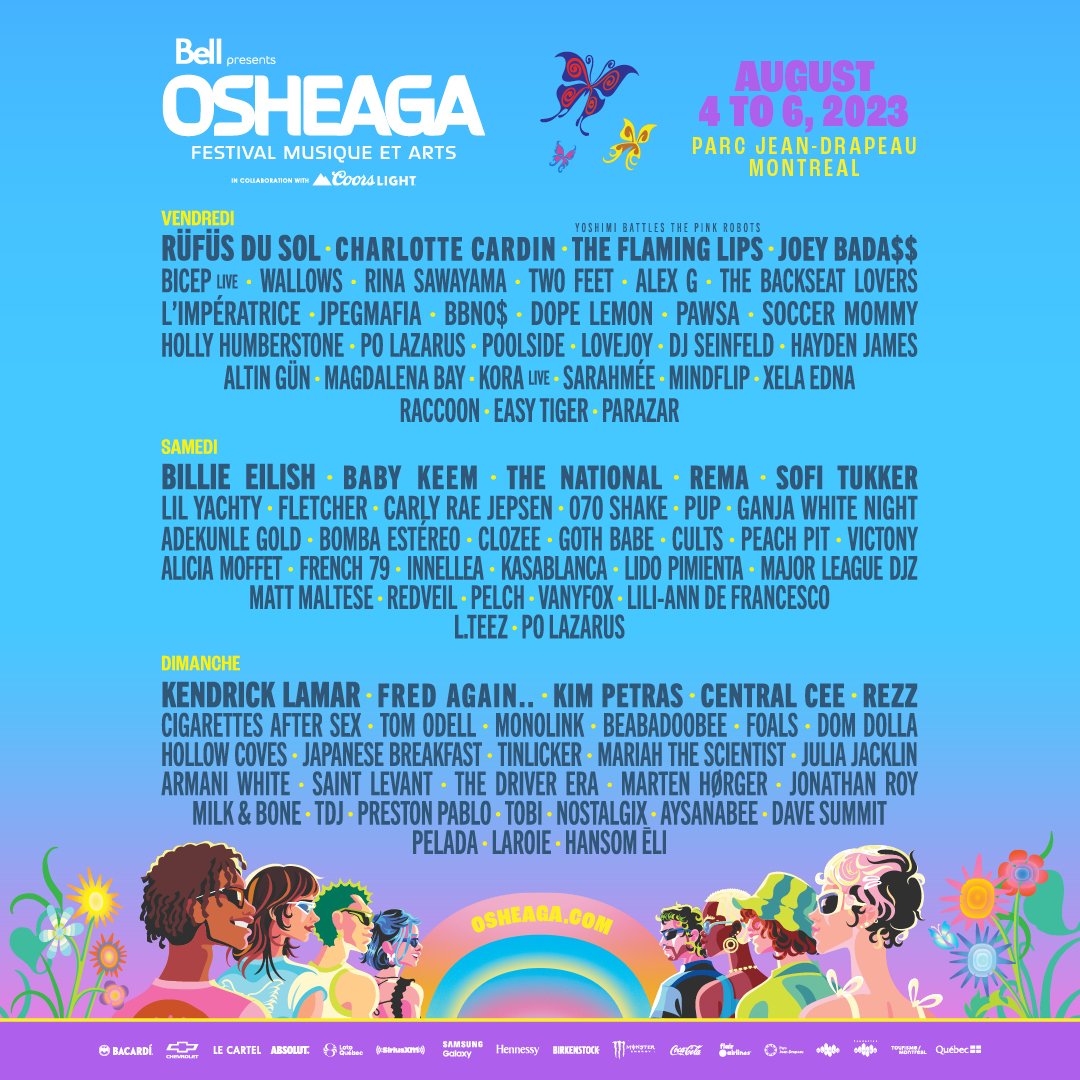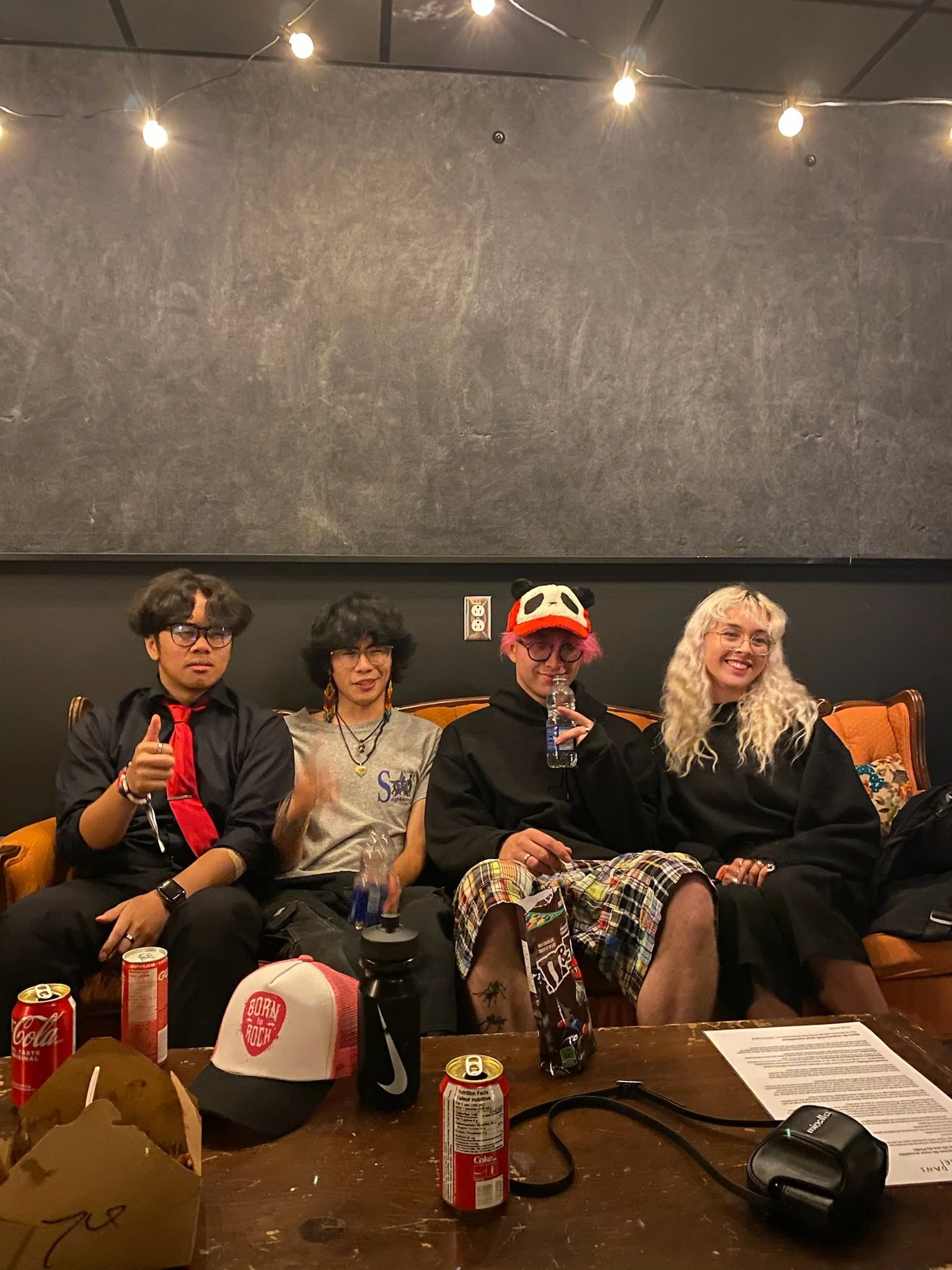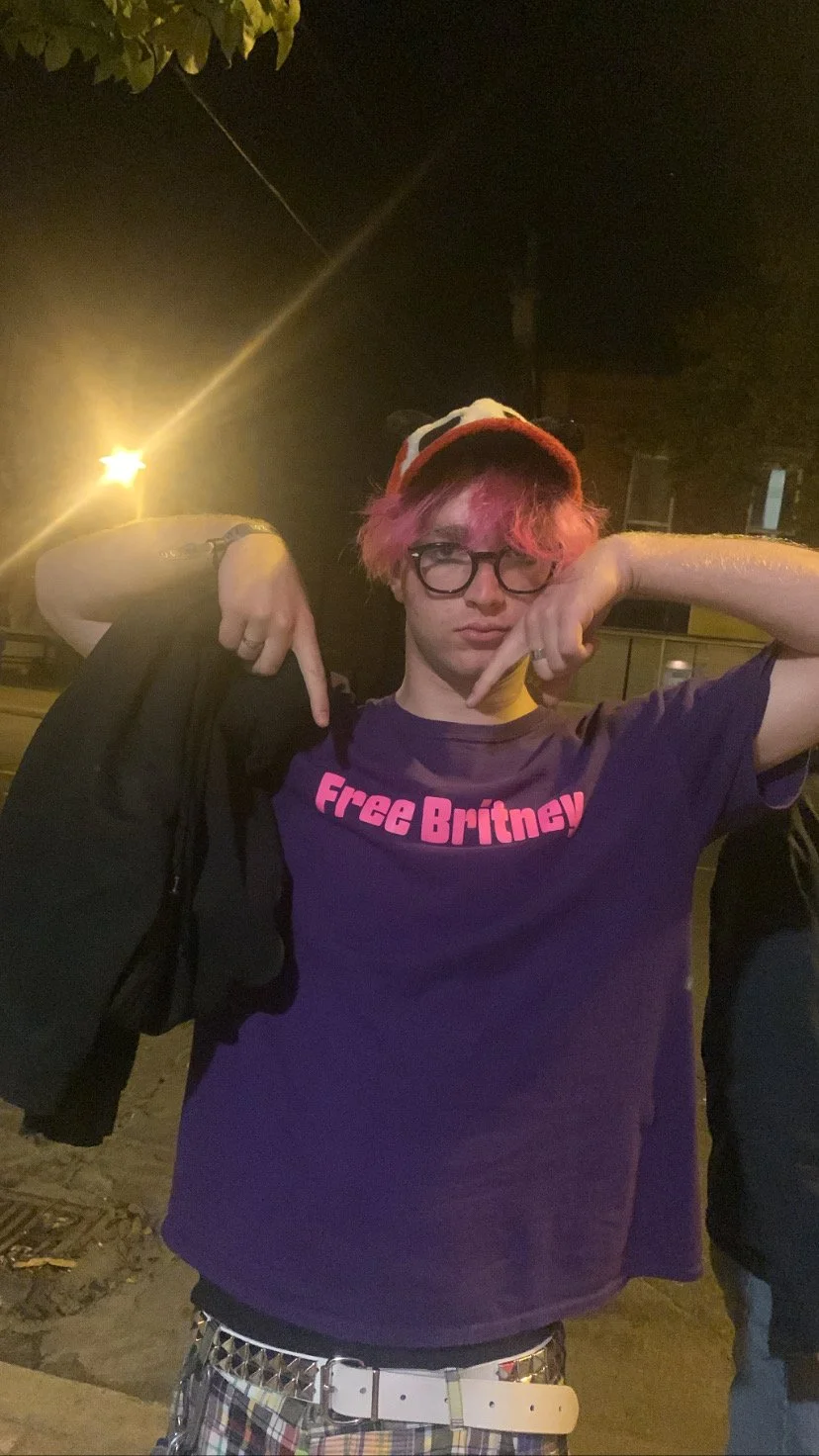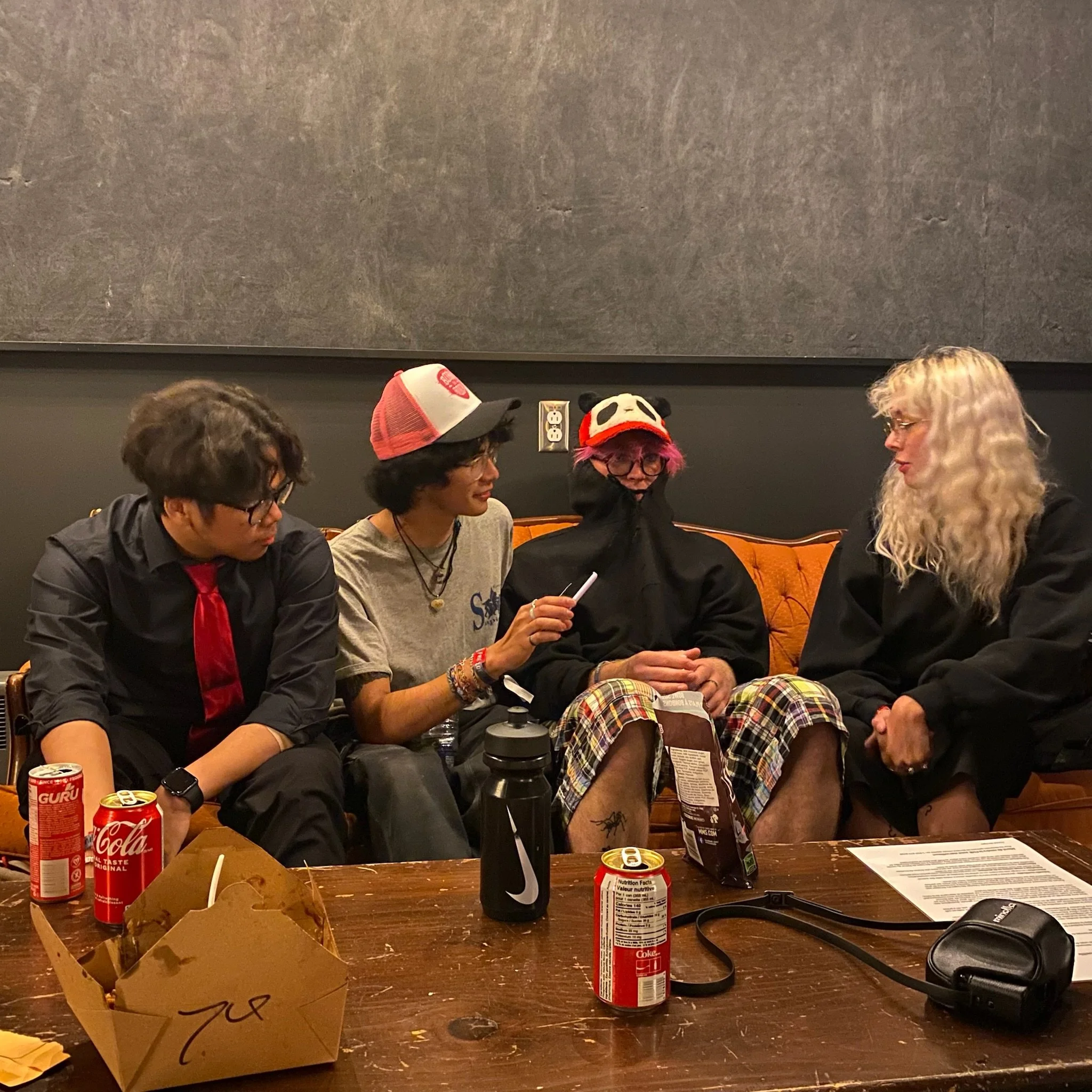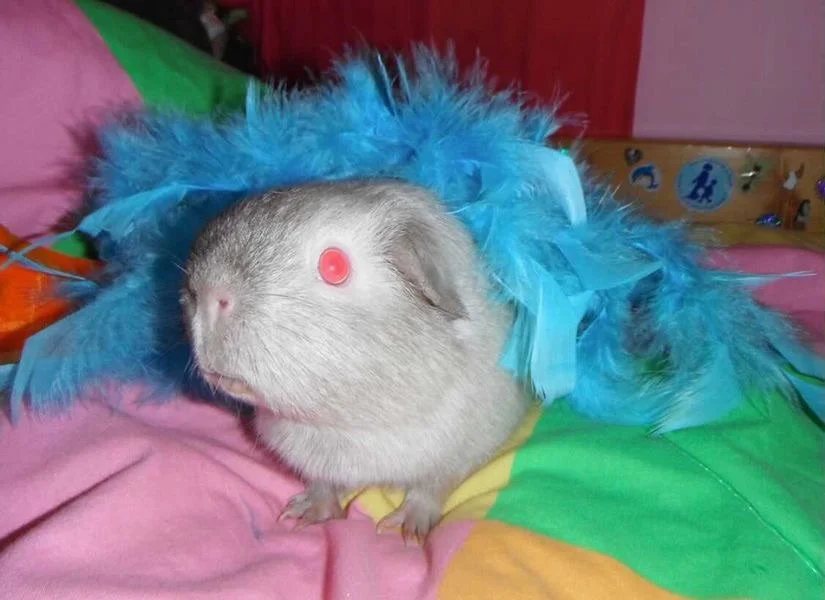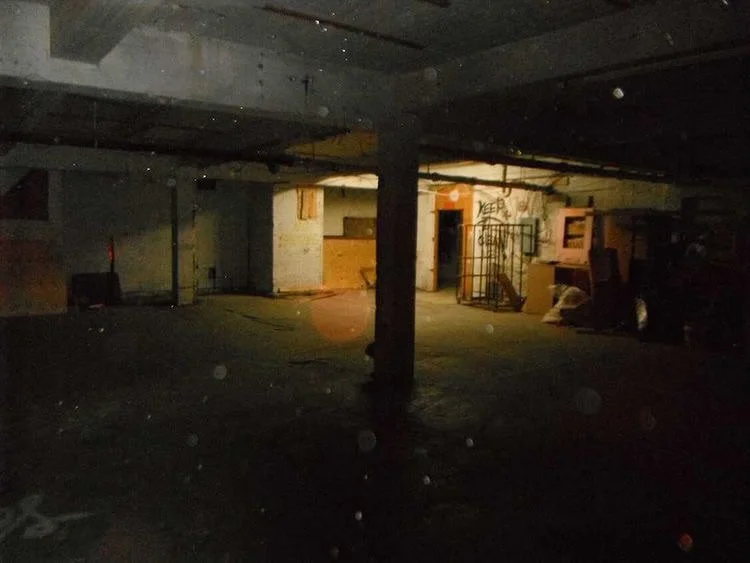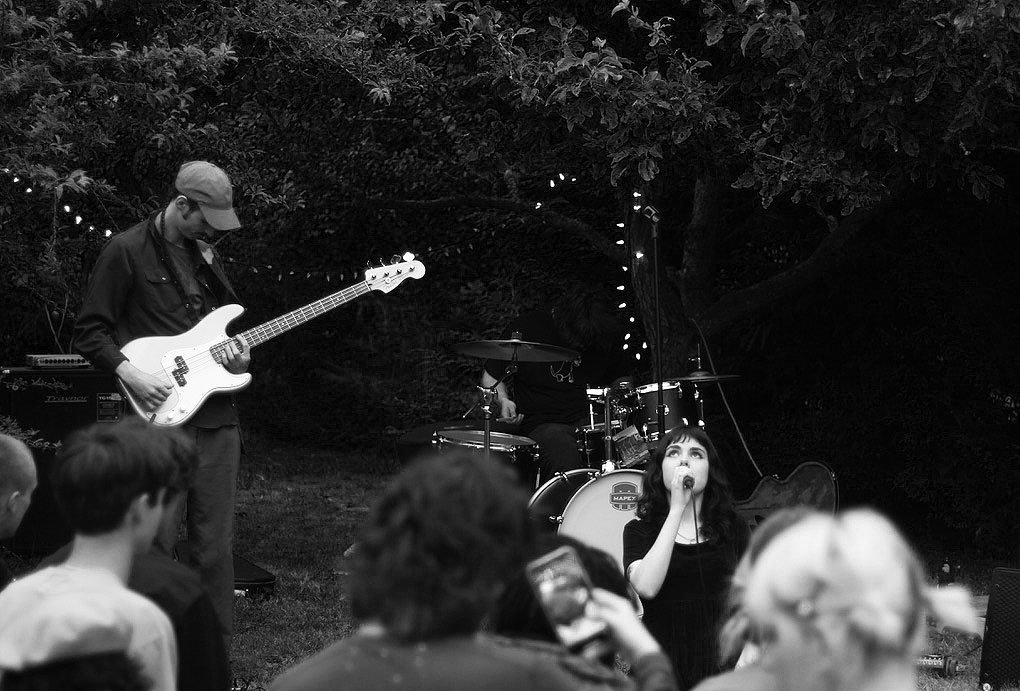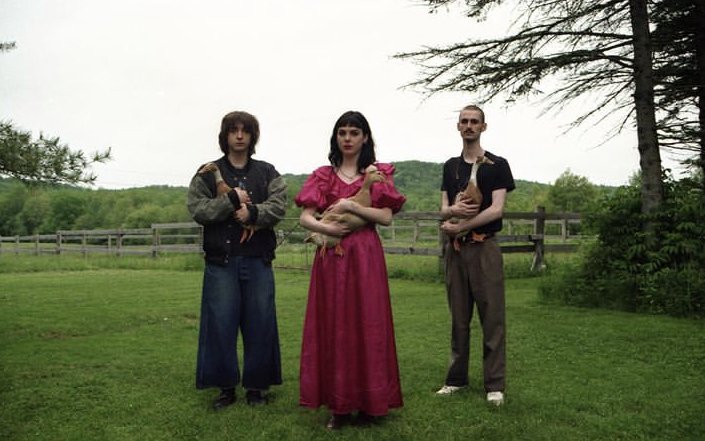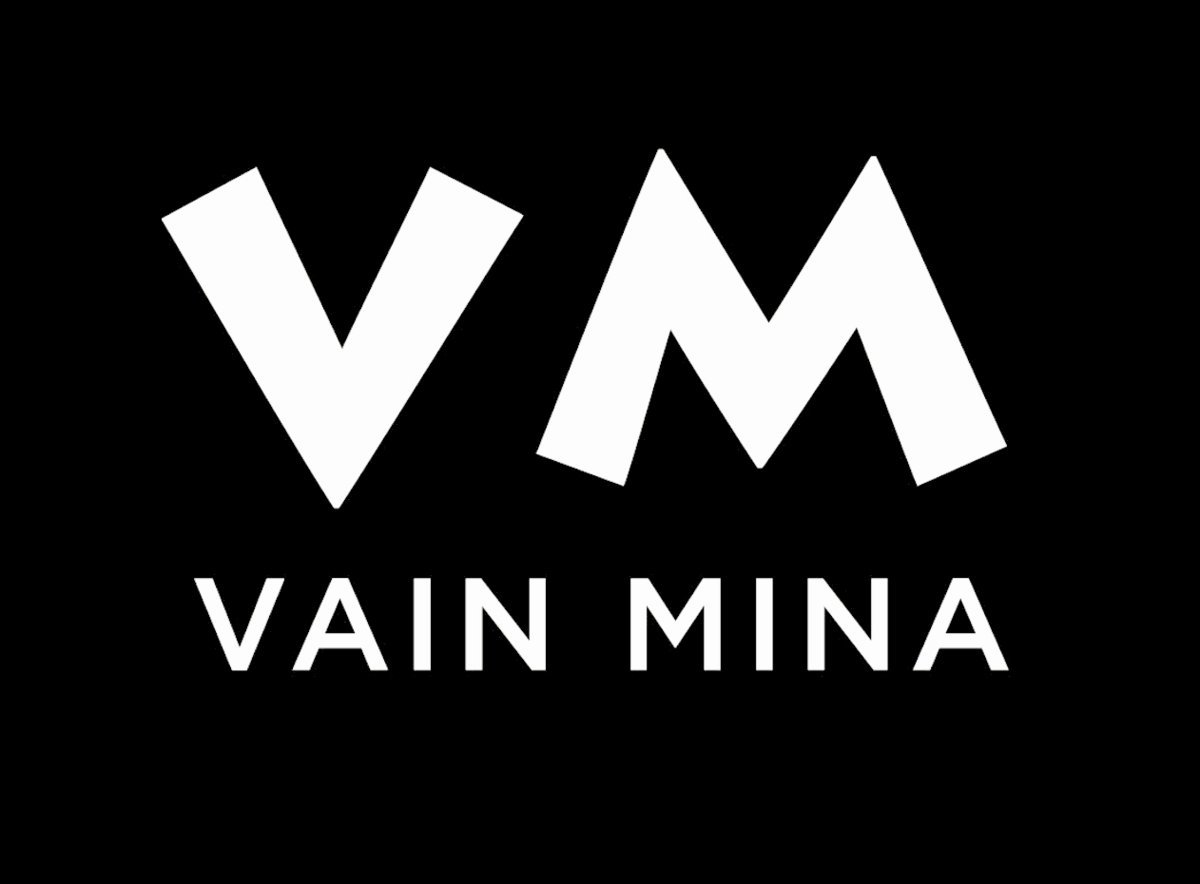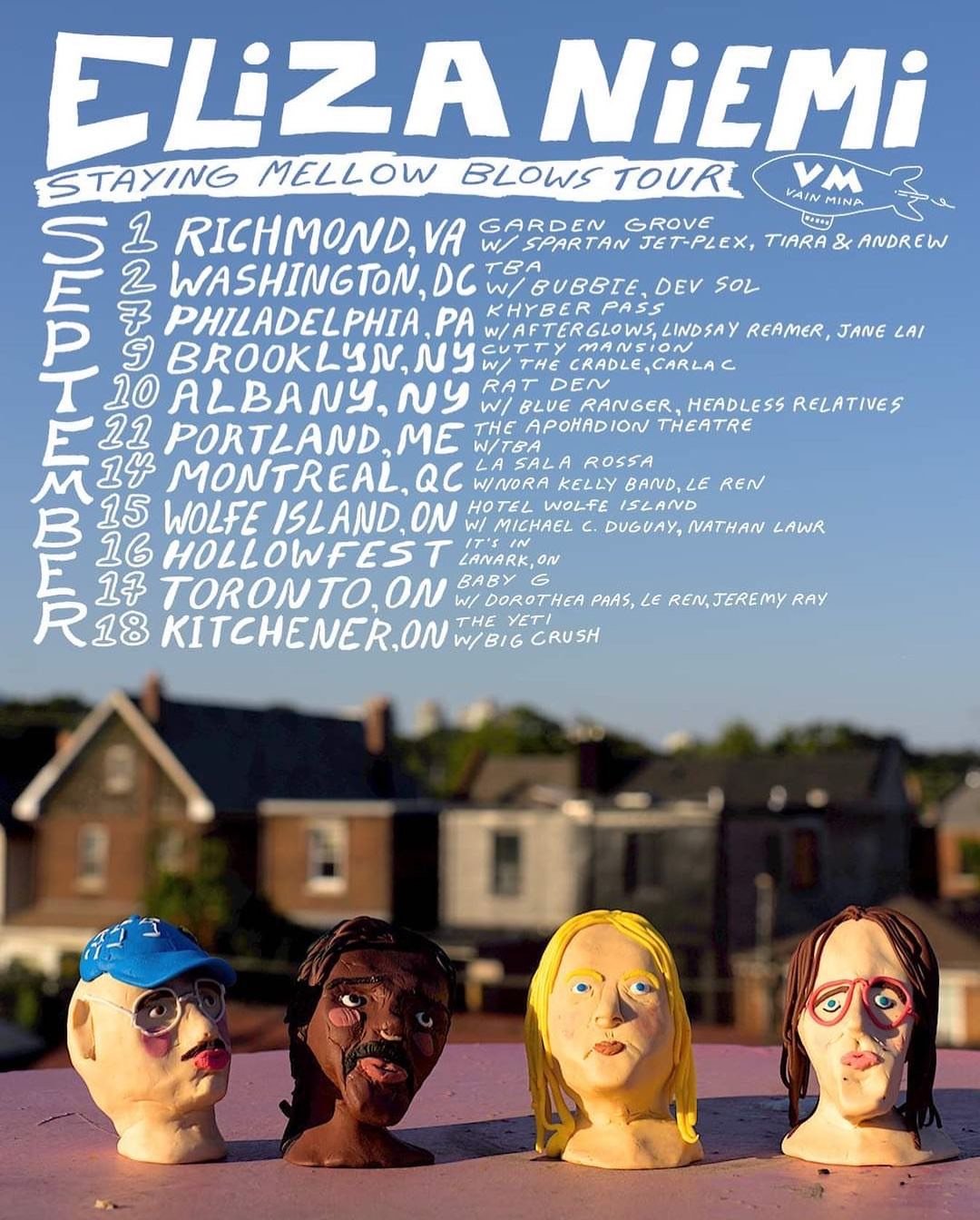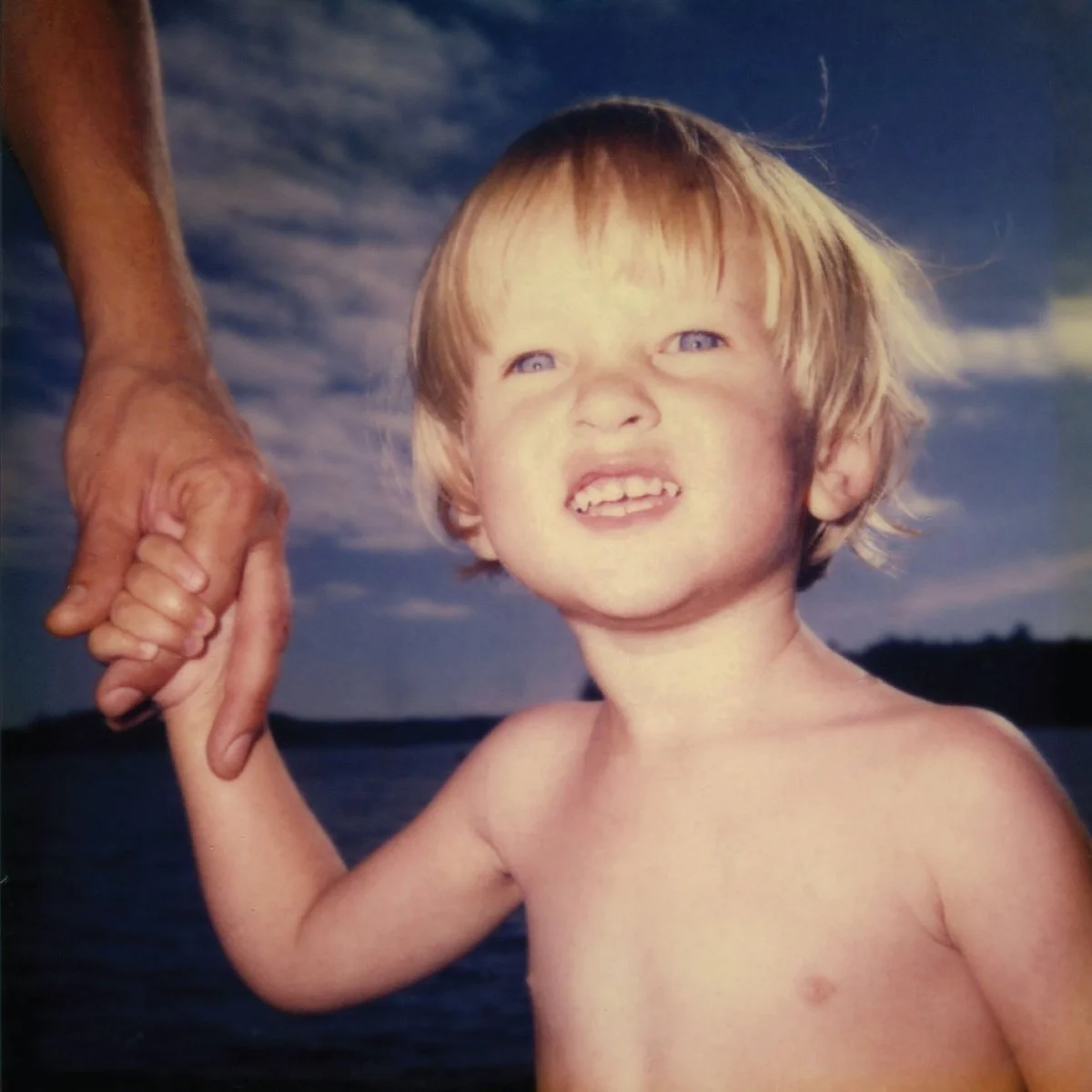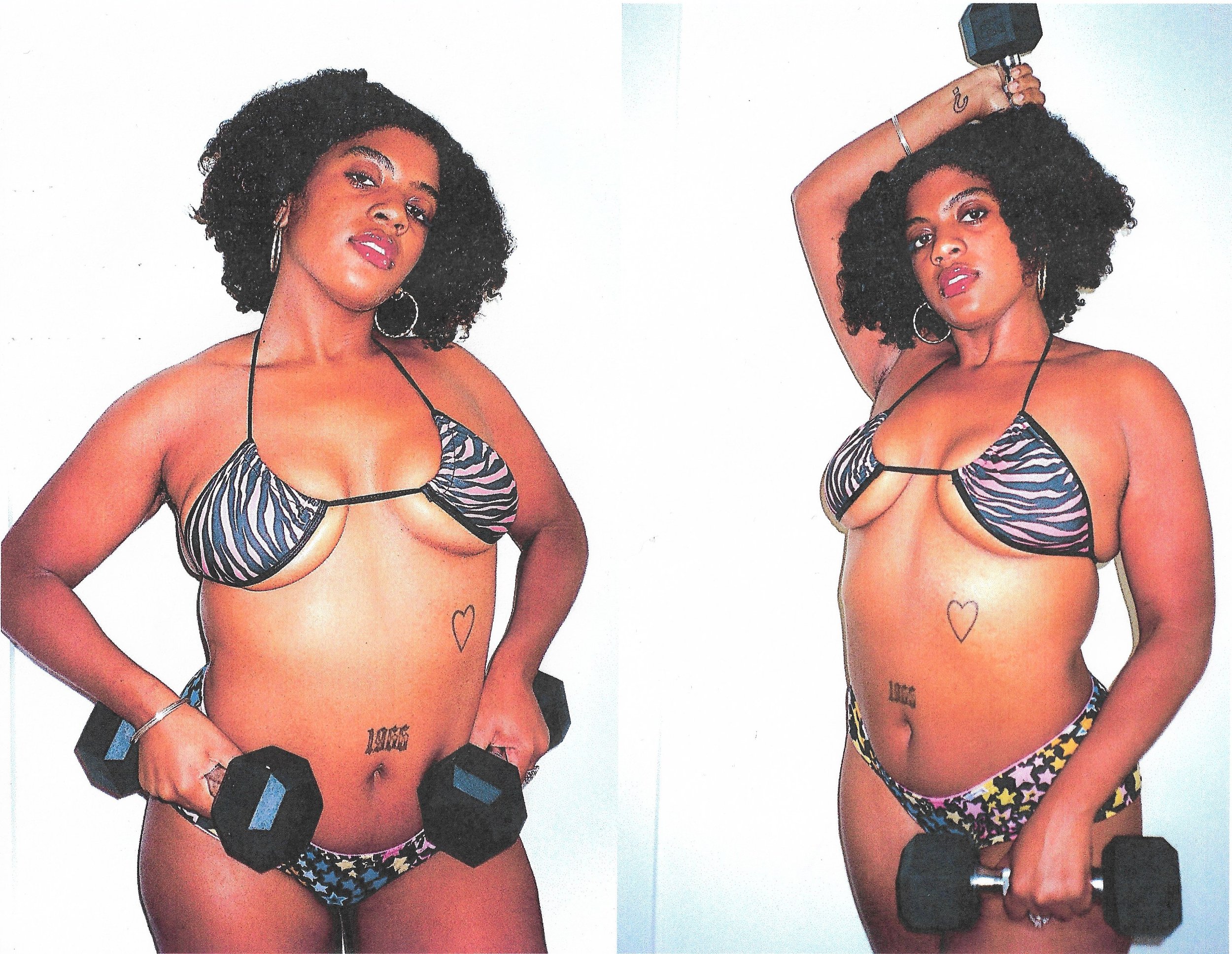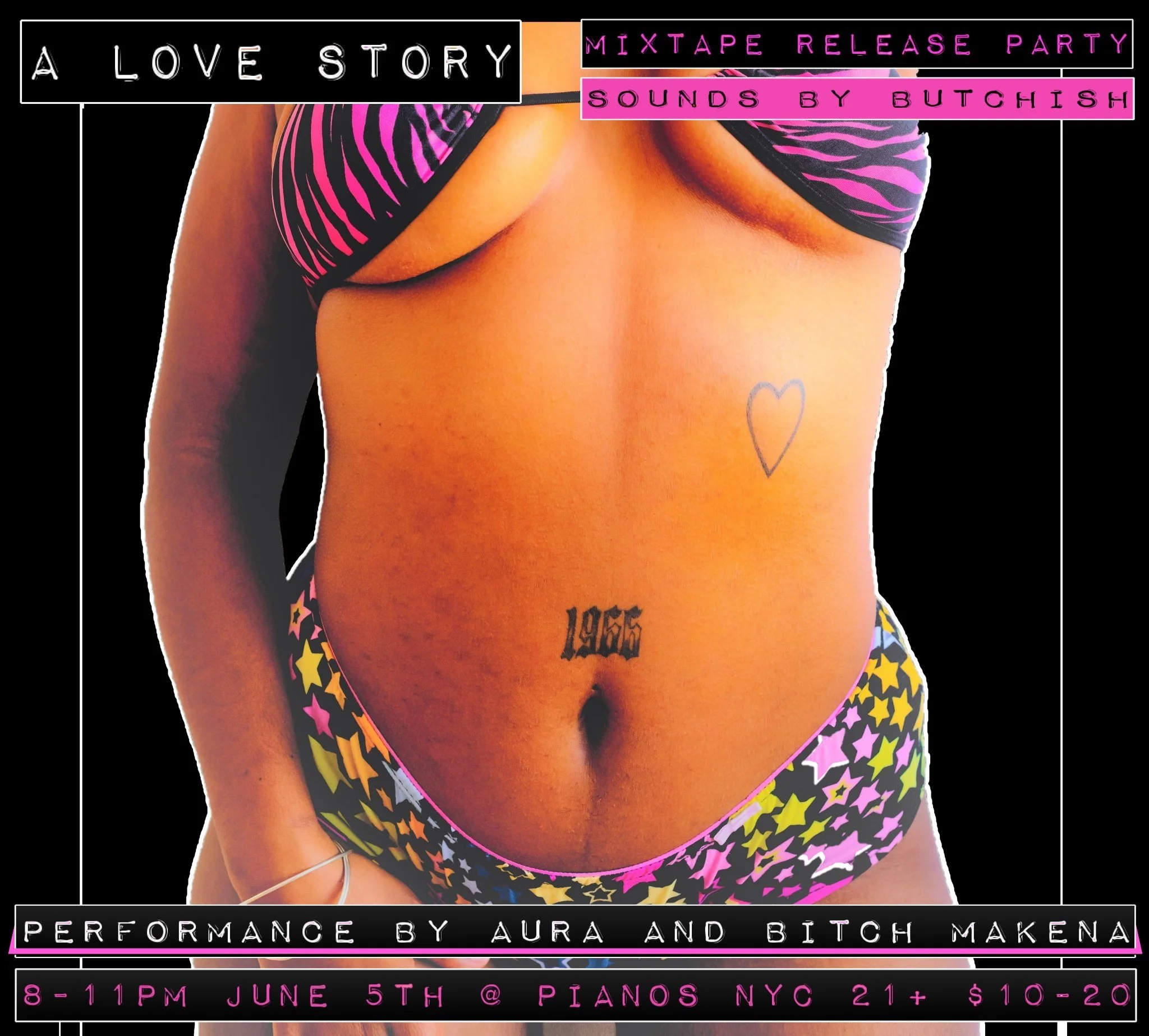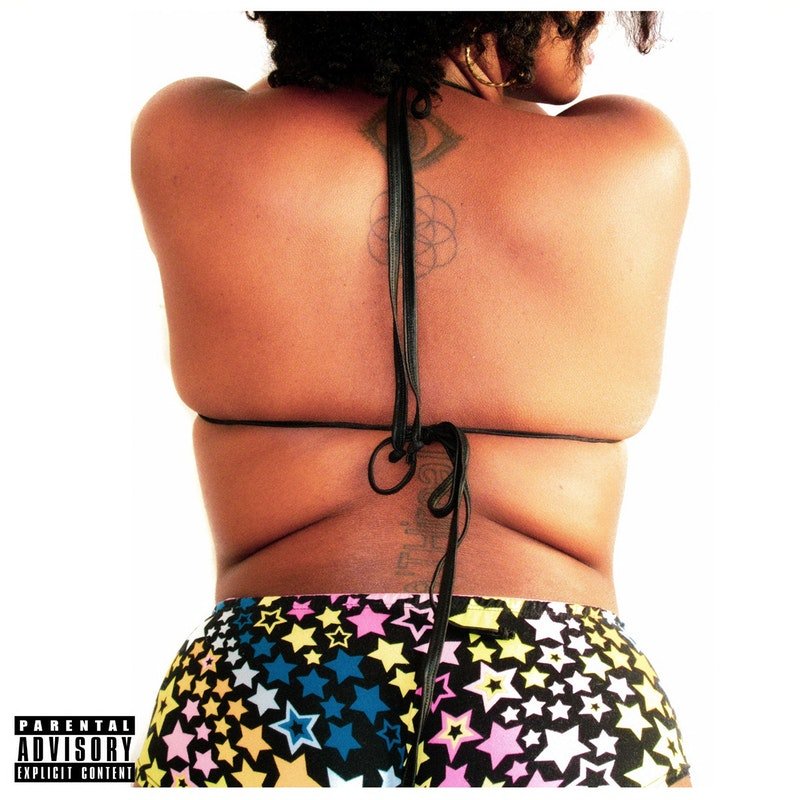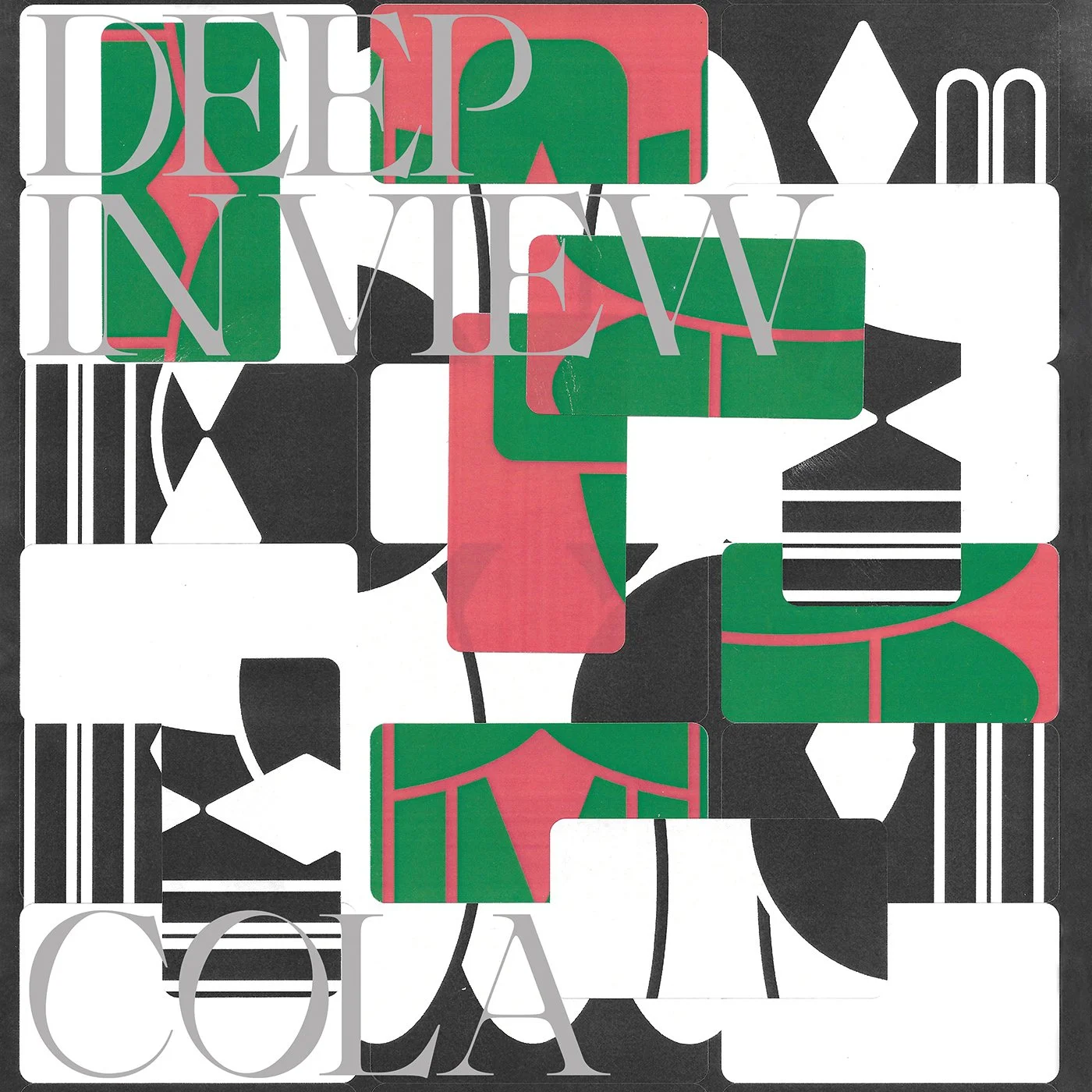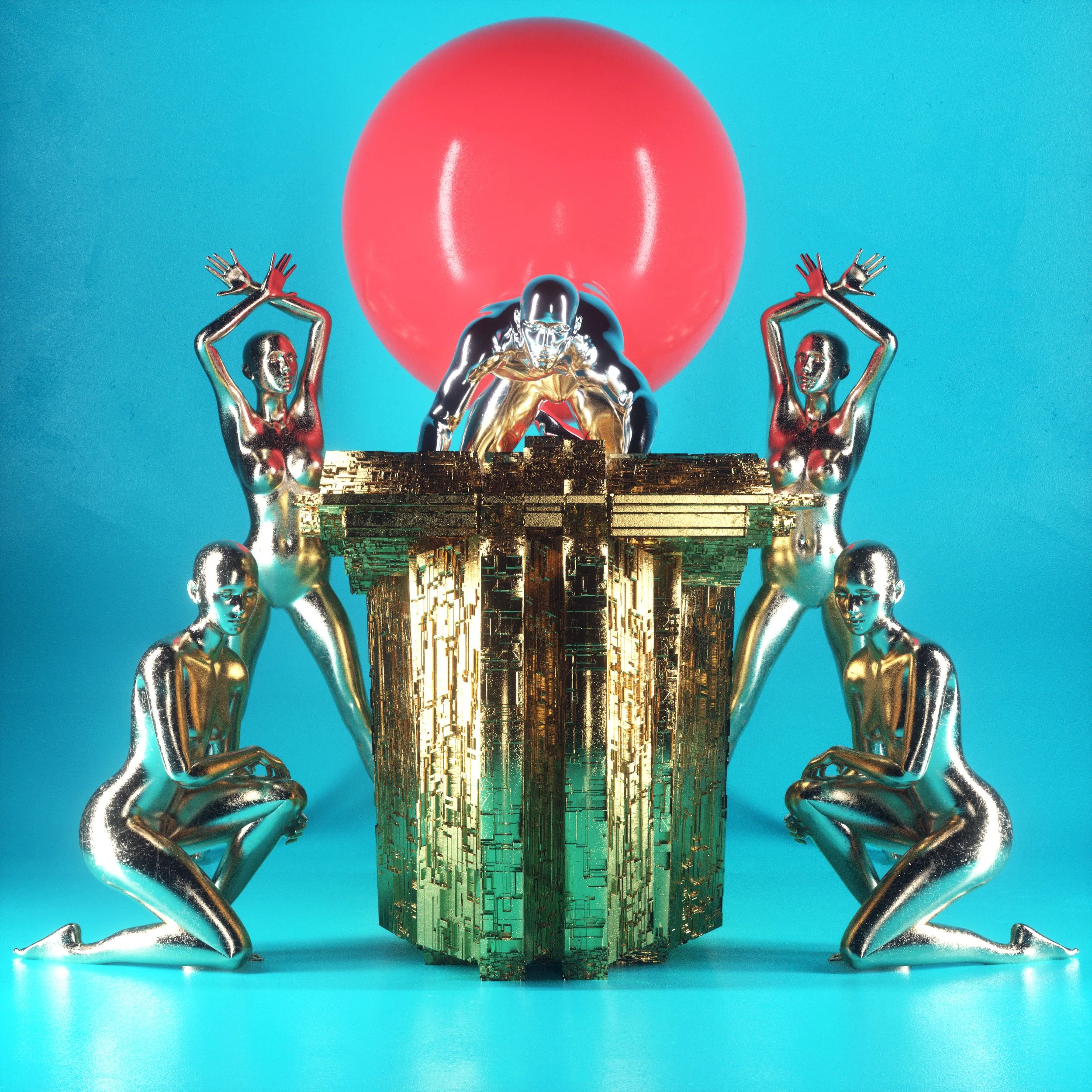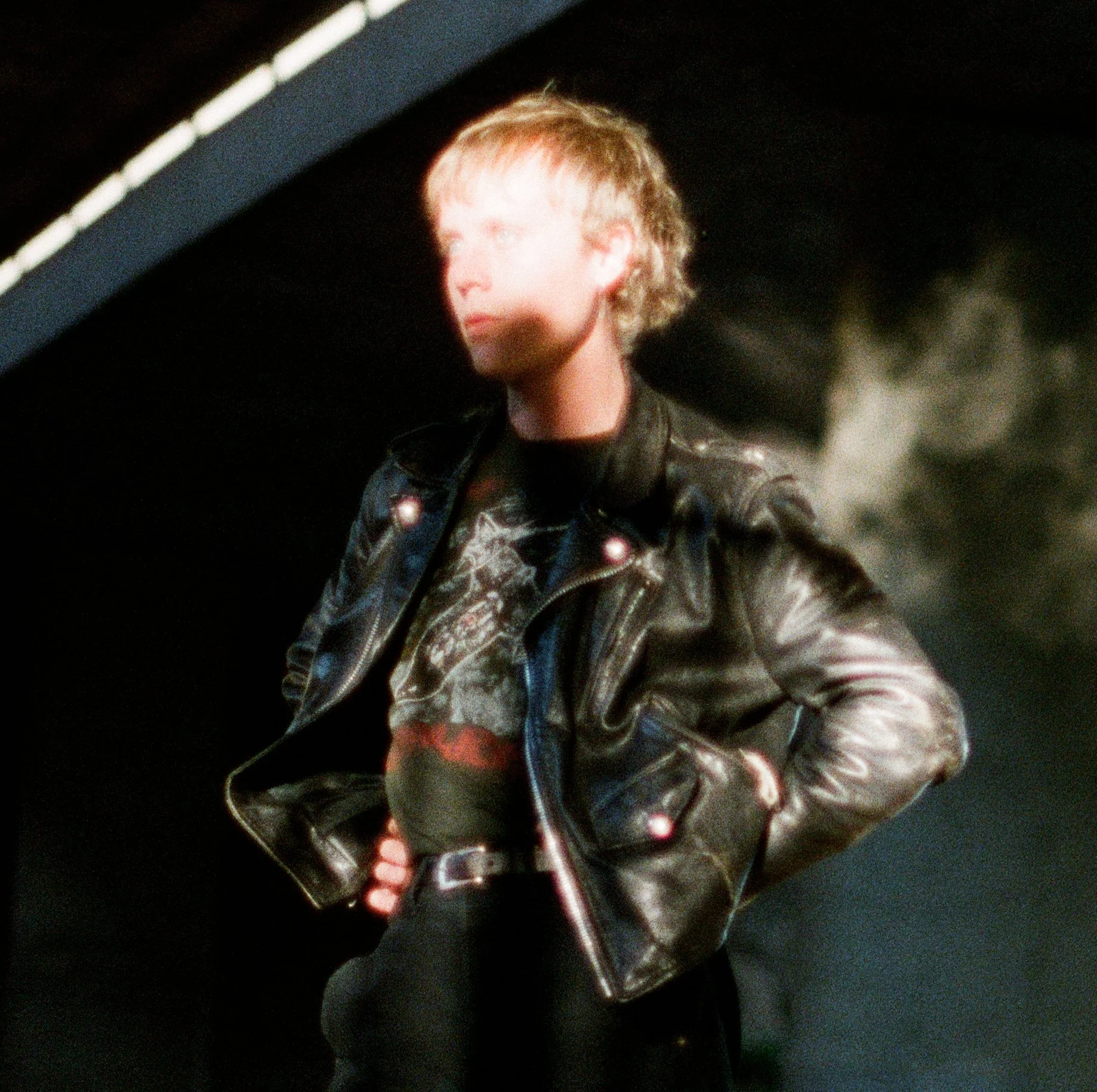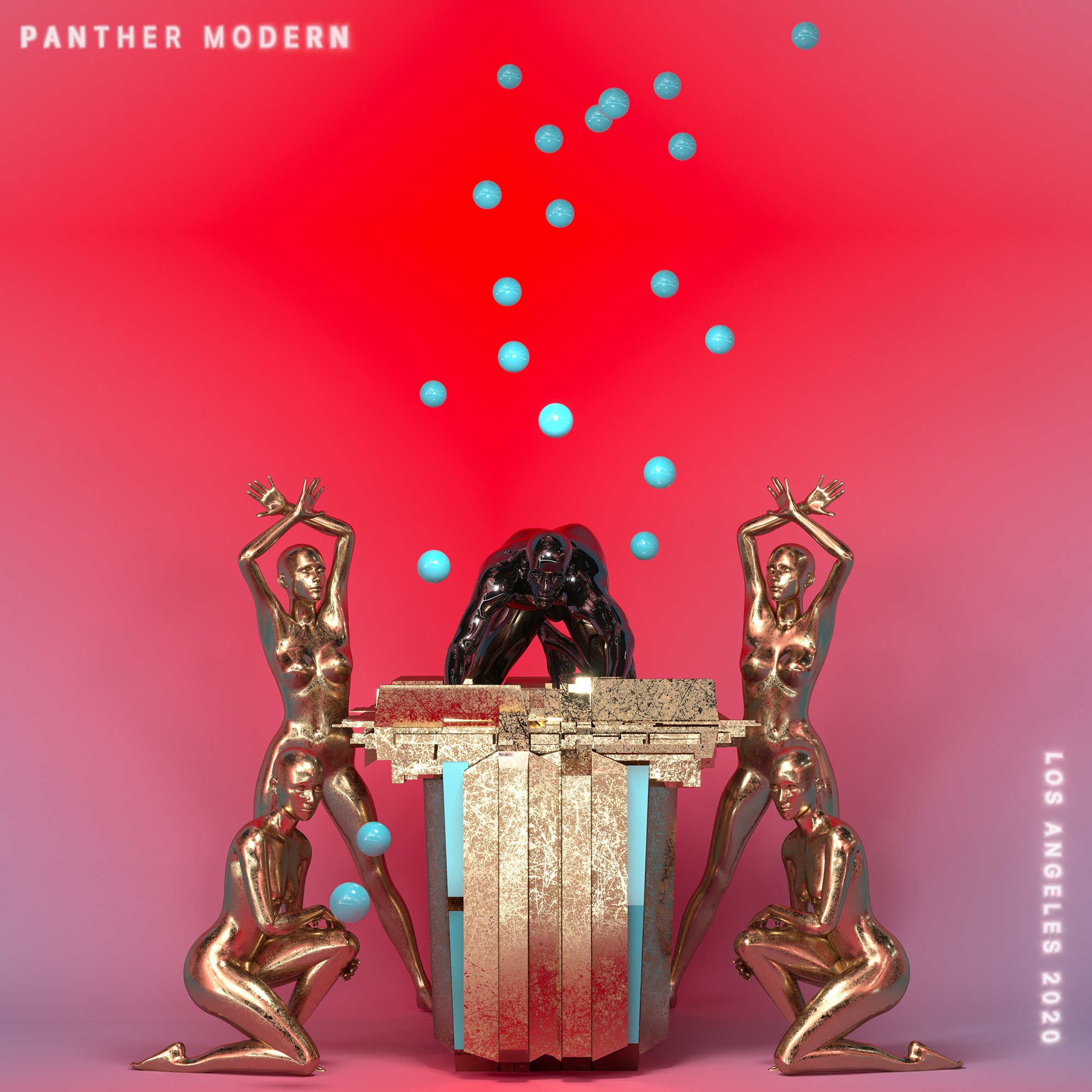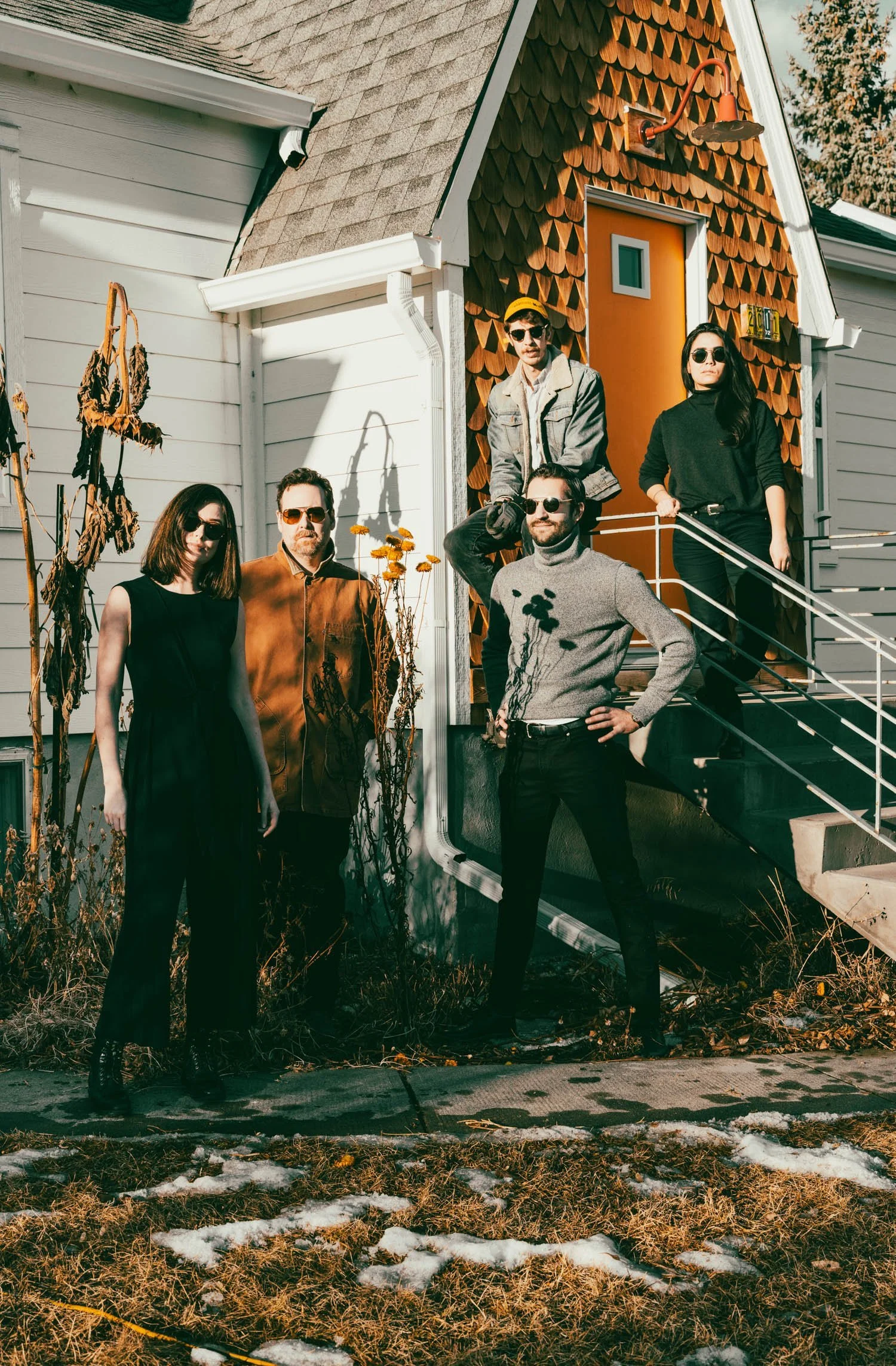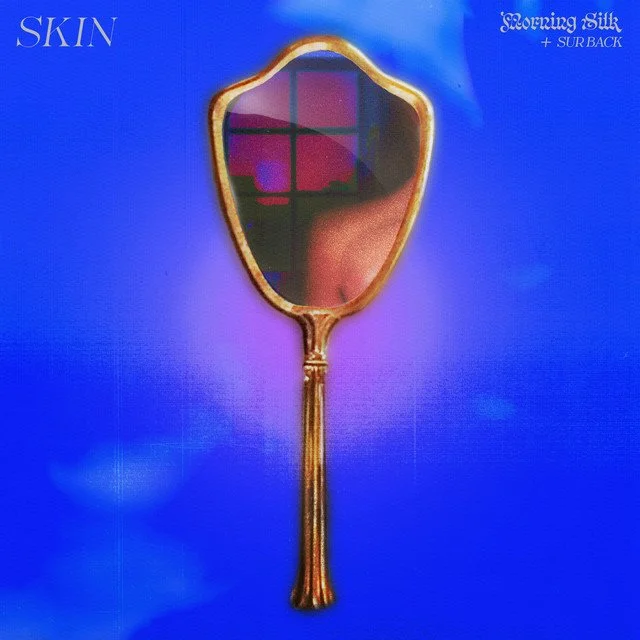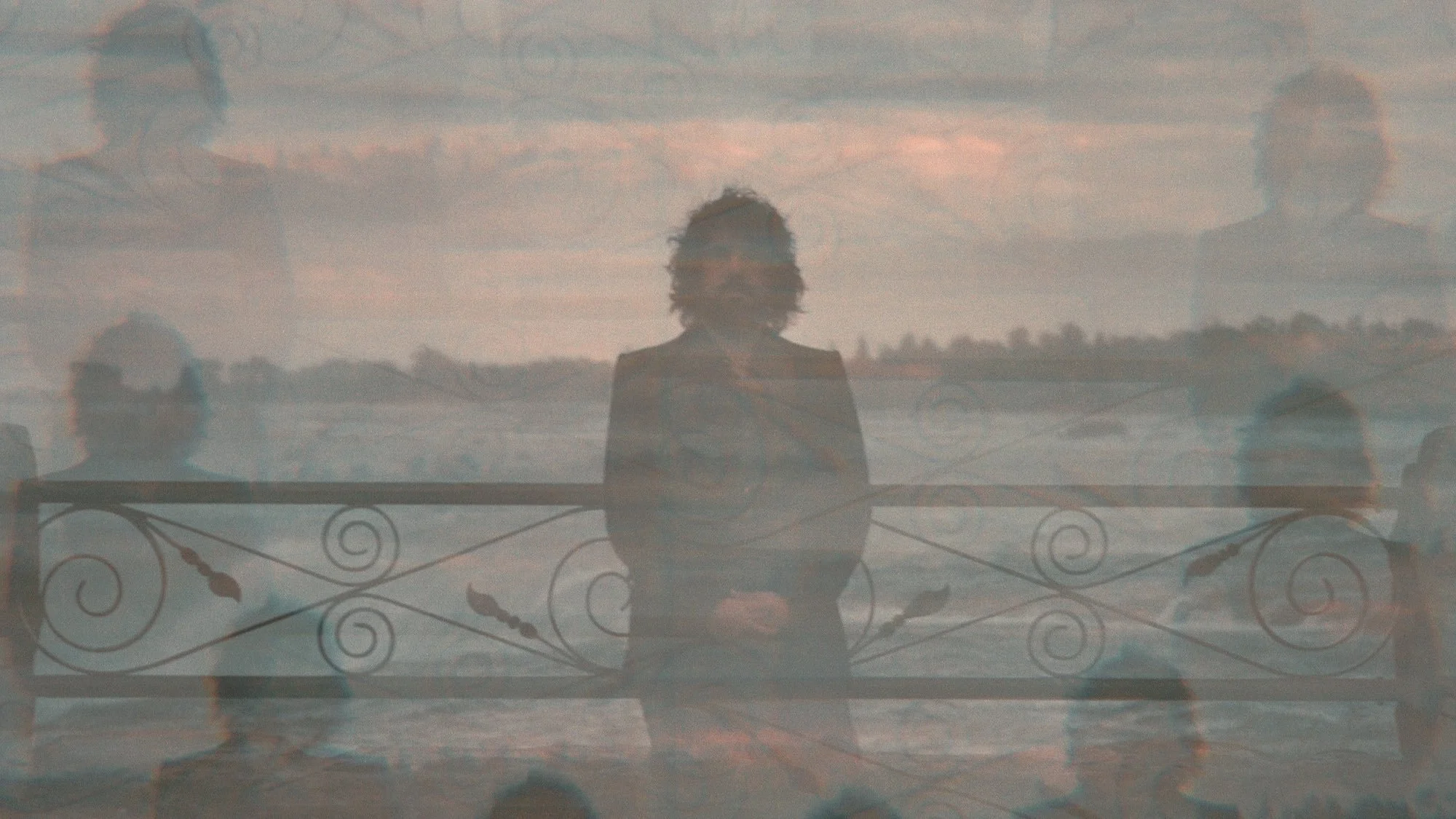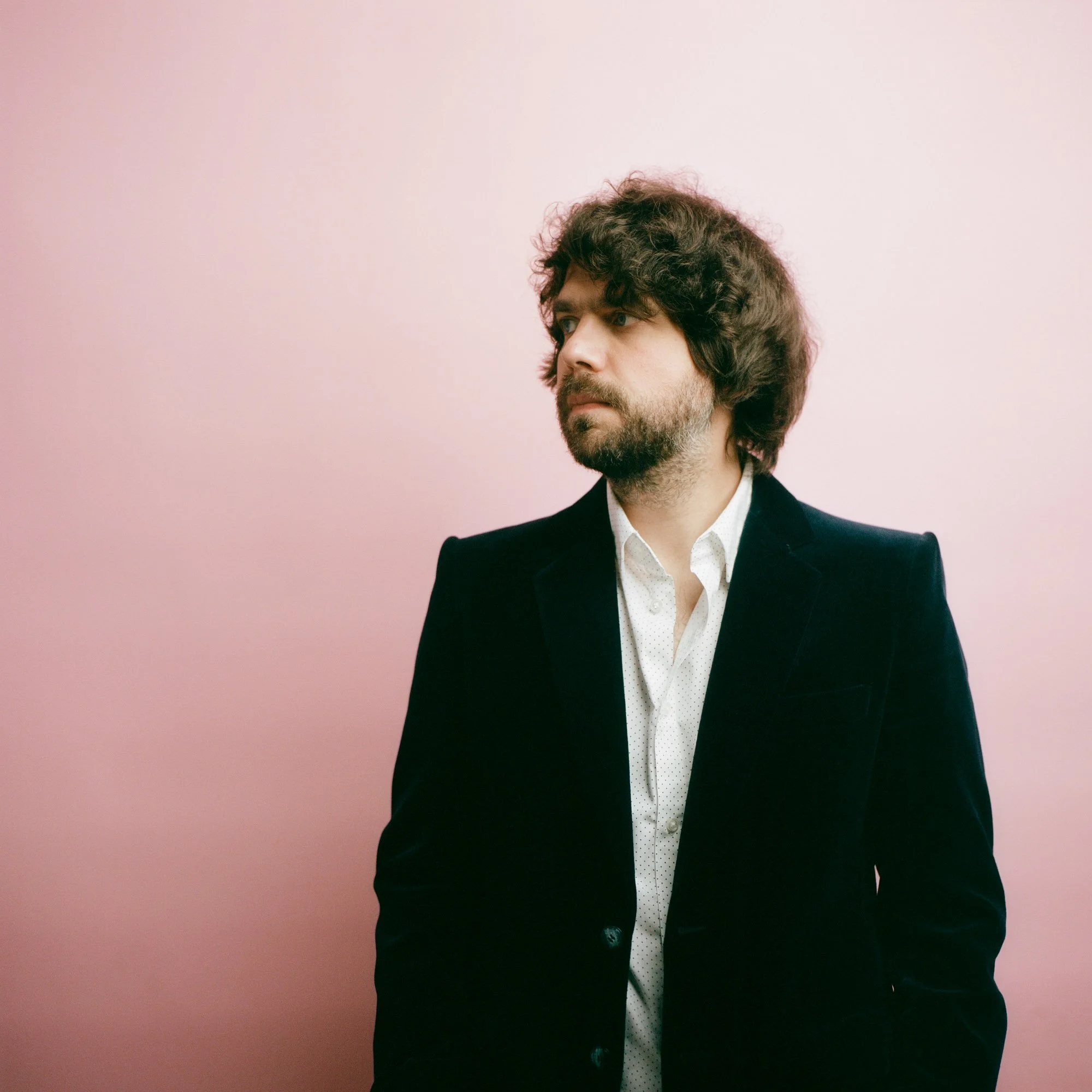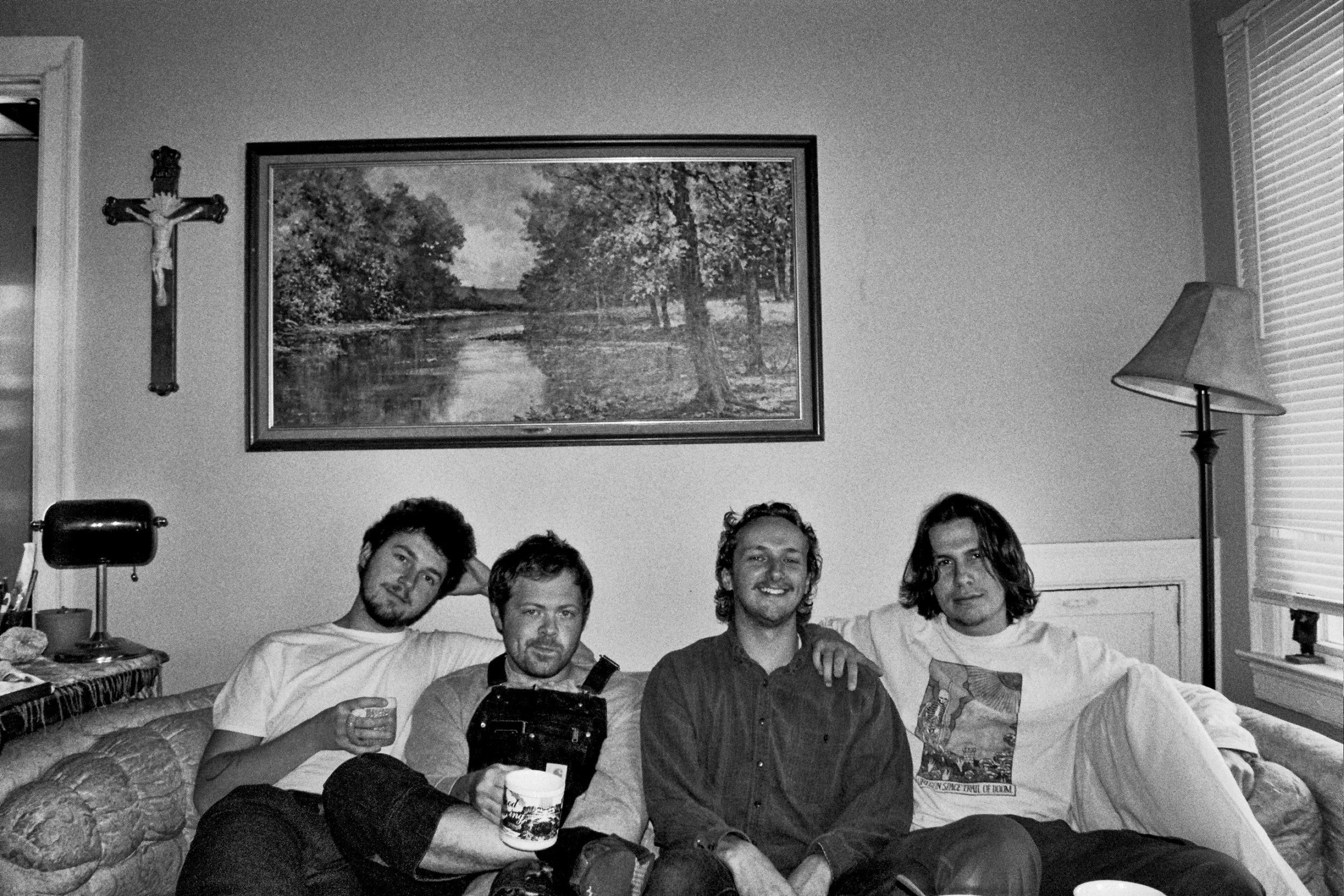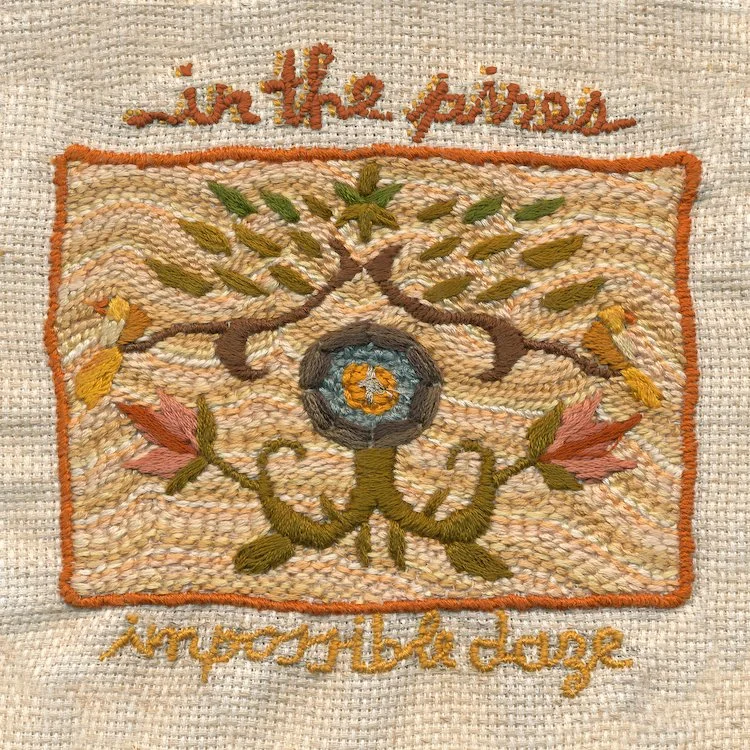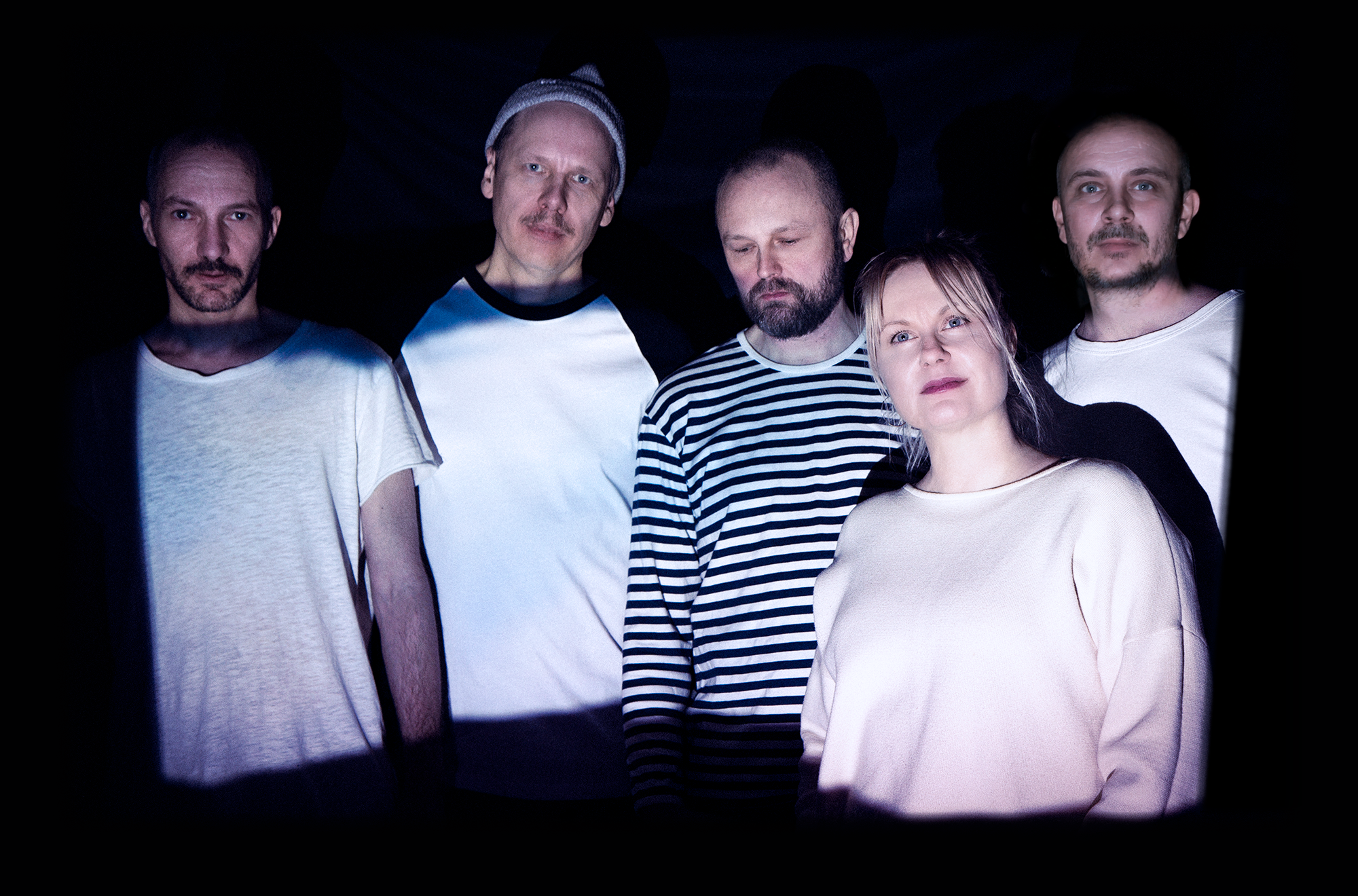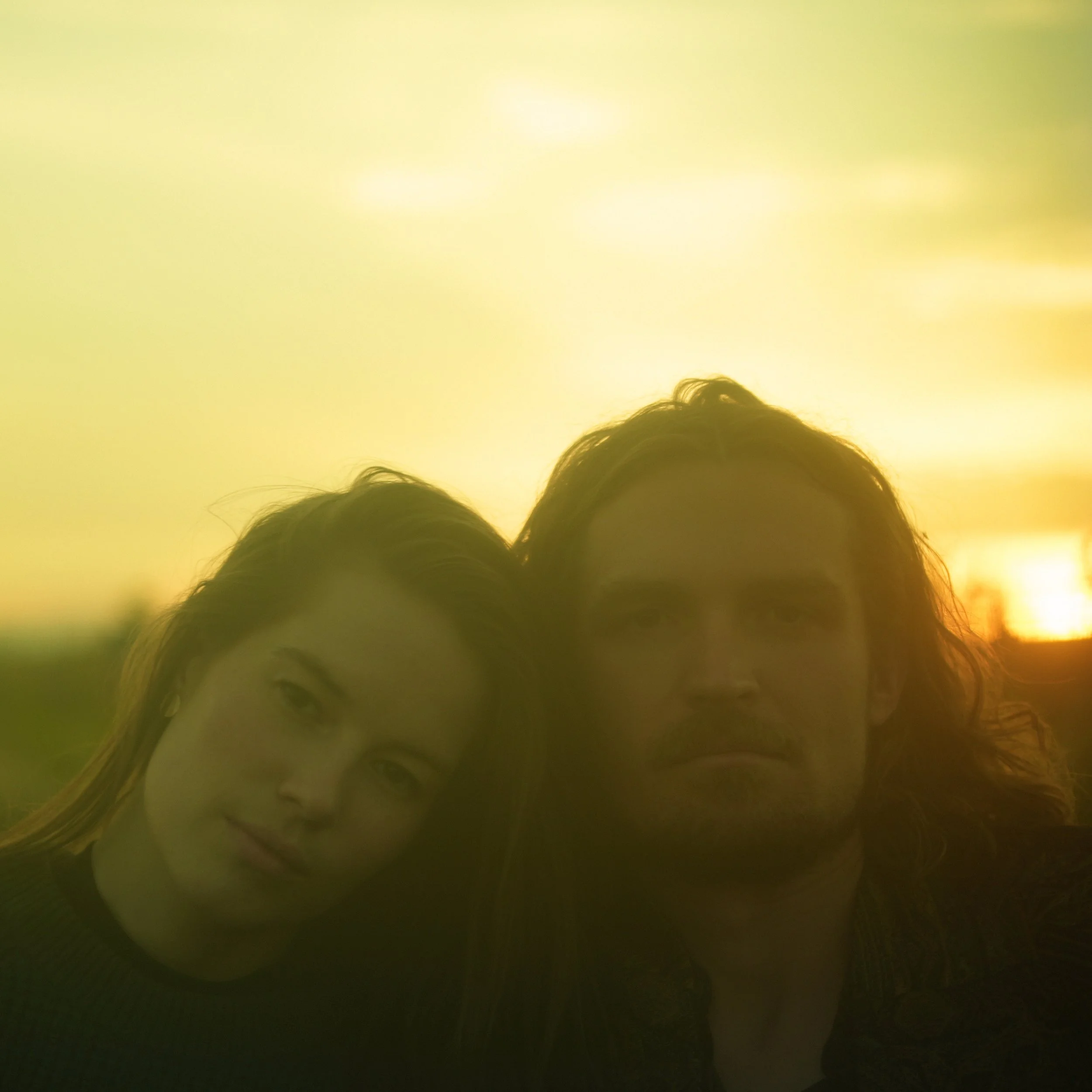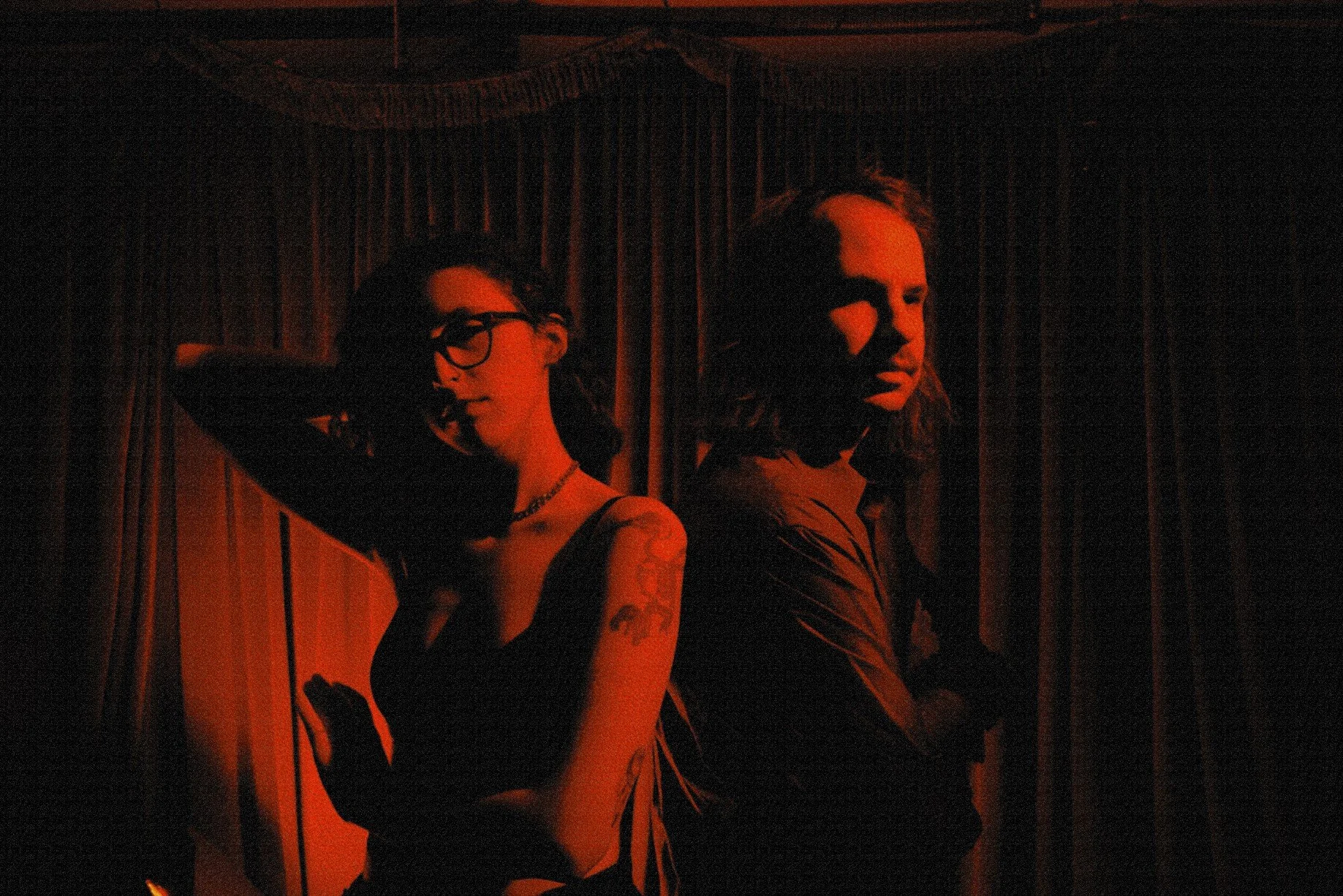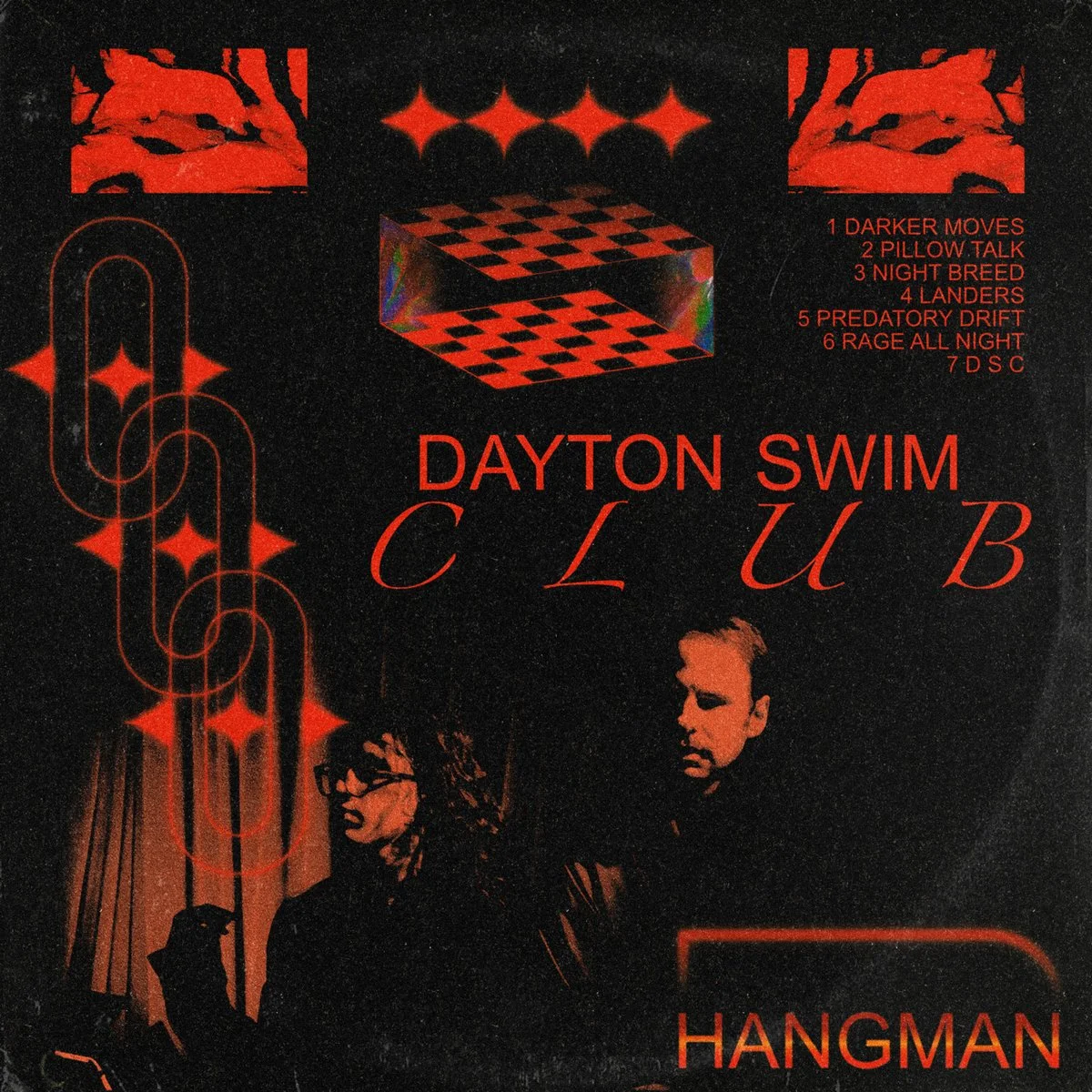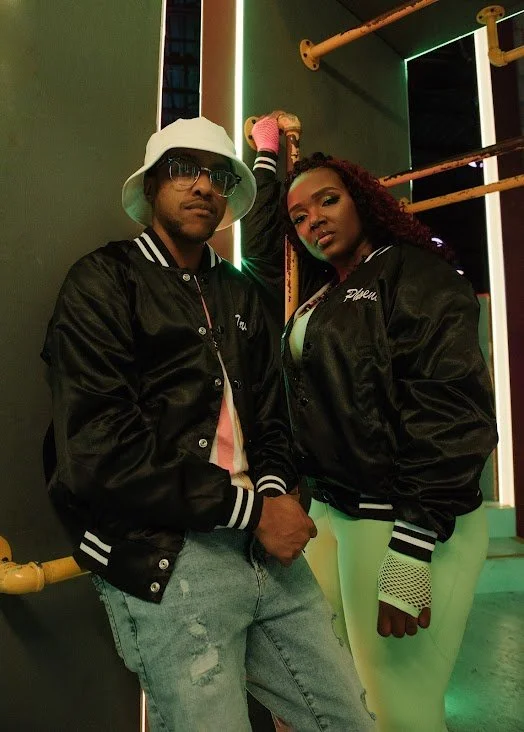OMBIIGIZI Incites Change Through Embracing Musicianship as Cultural Responsibility on Debut "Sewn Back Together"
OMBIIGIZI (from left to right: Daniel Monkman, Adam Sturgeon) by Rima Sater
For moccasin-gaze band OMBIIGIZI, musicianship is about more than self-expression, it’s about cultural responsibility.
“If we’re going to be Indigenous artists, we also have a responsibility to share parts of ourselves that not a lot of musicians necessarily have to wear. Being able to experience that struggle together is what helps us to overcome its challenges,” shares Adam Sturgeon, one half of OMBIIGIZI.
Composed of Anishinaabe musicians Daniel Monkman (Zoon) and Adam Sturgeon (Status/Non-Status), Toronto/London band OMBIIGIZI formed in 2021 and shortly thereafter composed their Polaris-Prize-nominated debut Sewn Back Together–released this past February on Toronto label Arts & Crafts.
Produced by Kevin Drew of Broken Social Scene, Sewn Back Together drew both Sturgeon and Monkman out of their comfort zones to combine their complimentary styles into an expansive listening journey that is both meandering and thunderous. Awash with grungy, whammy guitar and pop-punk vocals, intertwined with crystalline moods and open hearts, Sewn Back Together manifests honouring the reclamation of heritage and a mutual commitment to healing.
“The spirit in me is my family / The past and the future / Together it’s nearer / To our prophecy / This resurgency / I’m hearing you calling / So I make this offering”
- “Spirit In Me” (Sewn Back Together)
Through its exploration of both individual and collective identity, Sewn Back Together reckons with the realities of generational trauma, guided by familial teachings and a connection between Monkman and Sturgeon that transcends their collaborative brilliance.
In a fortunate opportunity to speak with the band before their set at FME, we discuss how they hold space for each other’s vulnerability in their craft.
“We put ourselves together in a safe way, so that we can understand eachother,” says Sturgeon. “Touring can be difficult because we go from our studio–a really safe environment–to the road, where we encounter the struggles of the music industry. It’s the reality of what we do, but we always have each other to actively remind ourselves why we’re doing what we’re doing,” he adds.
On the notion of touring insecurities, Monkman chimes in: “Venturing into unknown territory can be scary. Most people we meet are really kind, but you never know when the convoy freedom flags will fly up… [Being in Quebec], I get caught up in the French language stuff and it’s making me think more and more about how we’re all trying to exist on Turtle Island. Ultimately we have to come together…”
In a way that almost seems like Sturgeon can read Monkman’s mind, he continues: “Differences between us are our strengths. The more that we collectively acknowledge ourselves, the more we can collectively see each other. Our traditional teachings remind us of that.”
OMBIIGIZI by Rima Sater
Through embodying a creative mindset that uplifts their shared backgrounds, OMBIIGIZI incite change for future generations. One important aspect of the duo’s shared path is nurturing artists’ sobriety within the music industry, something that often comes as an afterthought when introducing safer space practices.
“Looking back, how do you feel you set an example for a younger version of yourselves?”
“Sobriety has been a big inspiration and is a movement within our band,” nods Monkman. “Our families are so important to us and addiction has been a part of our histories.”
“It’s really tough in the music industry,” says Sturgeon. “It’s hard not to want to partake in…desirable things? I suppose. But we keep each other humble and stay grounded.”
“We don’t have alcohol in our greenroom or on our rider. When I first talked to my dad about sobriety, he couldn’t understand. But now looking back. I’m glad to be in the present with other people who have continued to build a strong foundation for themselves,” concludes Monkman.
It’s through informing the present by looking at the past that OMBIIGIZI cultivates their motivation to inspire themselves and future generations. With a sound, energy and outlook that comes to life on stage, OMBIIGIZI and their aspirations to make change sets them apart from the status-quo. With their first release stirring thoughtful conversation in less than a year of rotation, they’ve set in motion a notable artistic trajectory to keep a pulse on.
Don’t miss OMBIIGIZI at POP Montreal on Saturday, October 1st at L’Entrepôt77 at 7:00pm.
OMBIIGIZI
Instagram | Bandcamp | Twitter
Zoë Argiropulos-Hunter (she/her) is the co-founder and managing editor of Also Cool Mag. Aside from the mag, she is a music promoter & booker, and a radio host & DJ.














